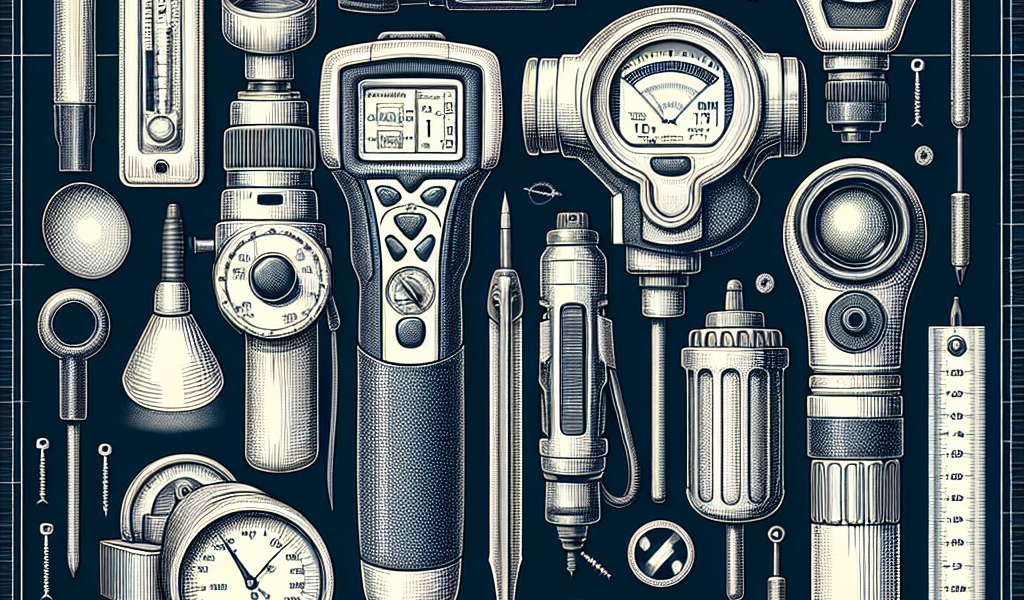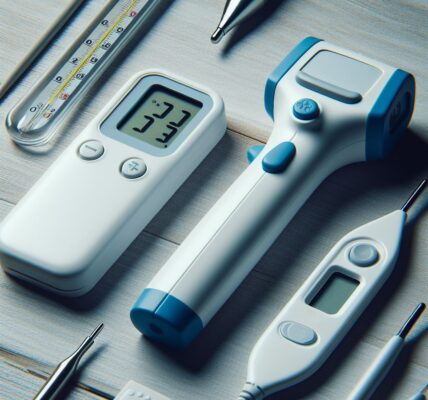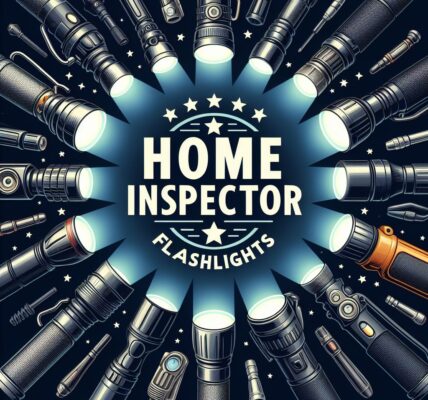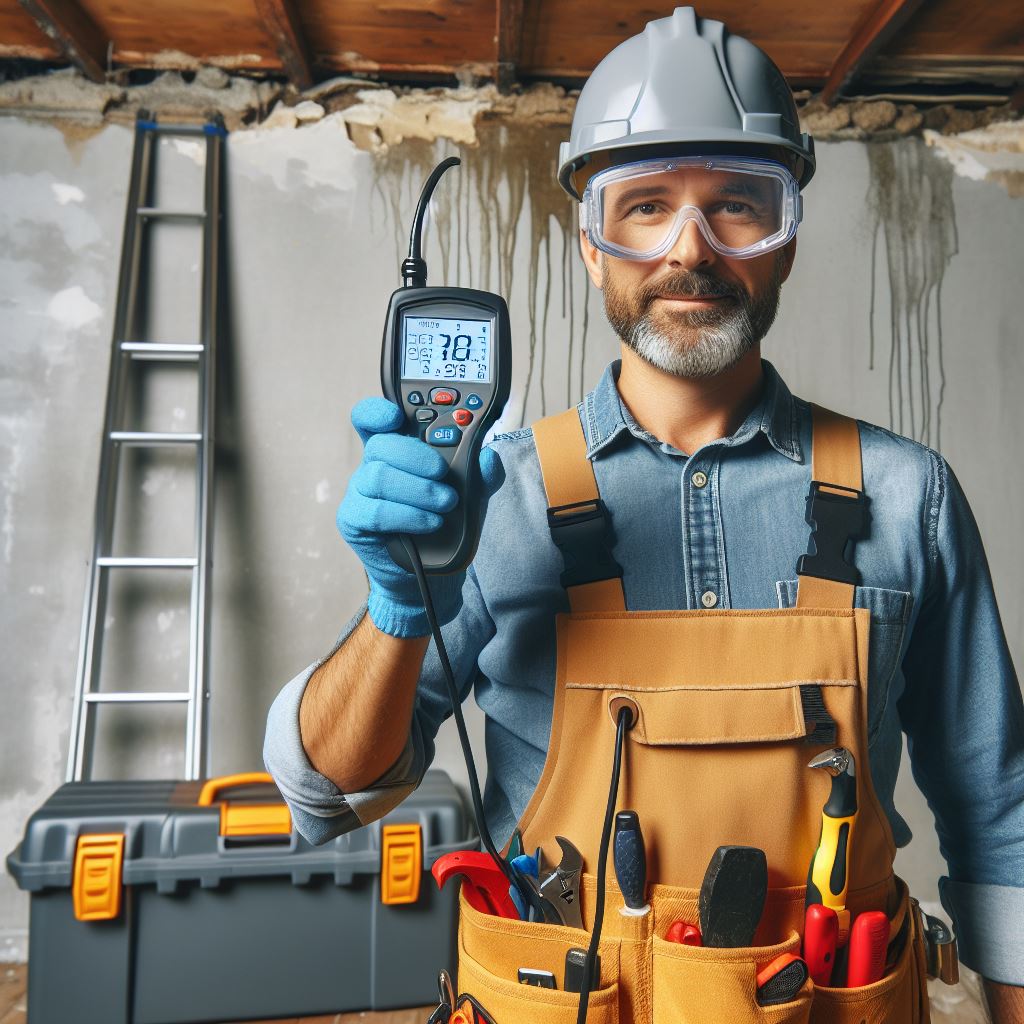The Ultimate Resource for Accurate Home Inspections: Unleash the Power of Precision Tools. When it comes to conducting thorough home inspections, accurate measurements are crucial. From assessing room dimensions to evaluating the condition of various components, precision tools play a vital role in providing accurate and reliable information. In this guide, we will explore a range of measuring devices that are essential for home inspectors. Whether you are an experienced professional or just starting out in the field, understanding these tools and their applications can greatly enhance your ability to provide precise and comprehensive assessments during home inspections.
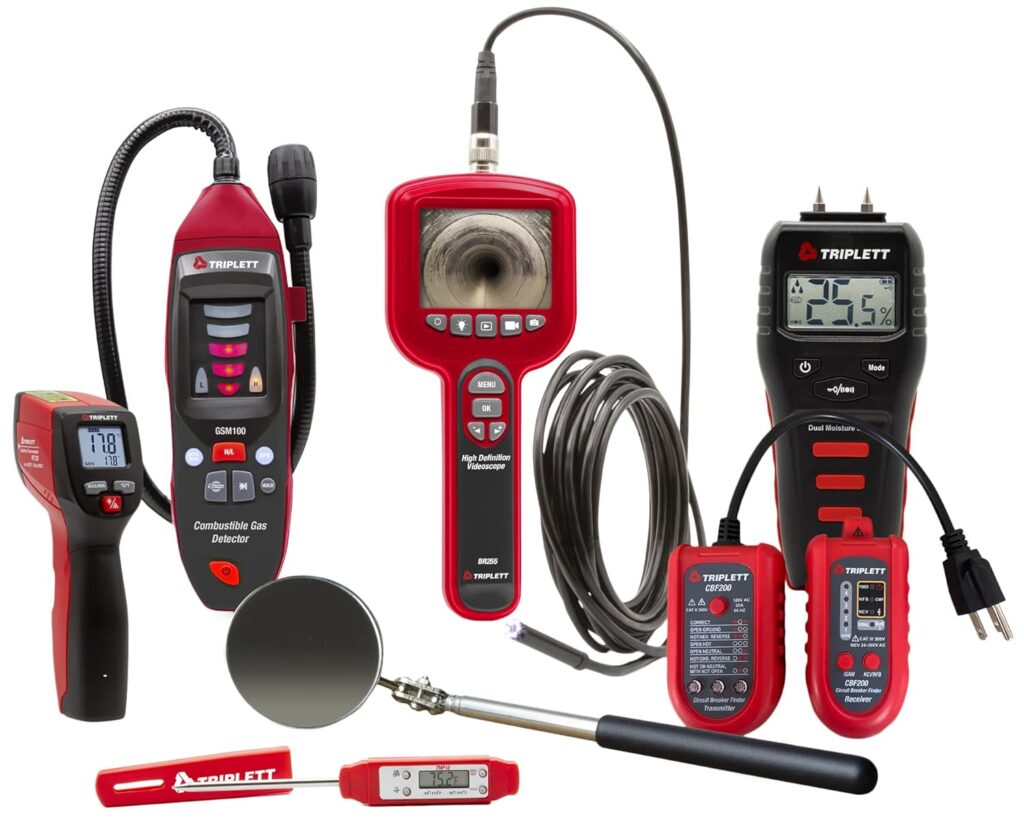
Introduction to Precision Tools for Home Inspectors
When it comes to conducting a thorough and accurate home inspection, precision is paramount. To achieve precise measurements, home inspectors rely on a range of measuring devices specifically designed for their trade. These tools play a crucial role in evaluating the condition of various components within a house, enabling inspectors to identify potential issues that may require attention or repairs.
The importance of precise measurements cannot be overstated in the field of home inspection. Accurate measurements provide objective data that helps homeowners make informed decisions about their property and assist real estate professionals in setting appropriate prices for homes on the market. In this guide, we will explore some essential measuring devices utilized by home inspectors and highlight their significance in performing comprehensive inspections.
Laser Distance Meters
One of the most indispensable tools used by home inspectors is the laser distance meter (LDM). This compact device allows inspectors to measure distances accurately with minimal effort. LDMs emit laser beams that bounce back off surfaces and enable users to determine distances based on time-of-flight calculations. By simply pointing the device at a target, such as walls or windows, an inspector can swiftly obtain accurate measurements without needing physical contact.
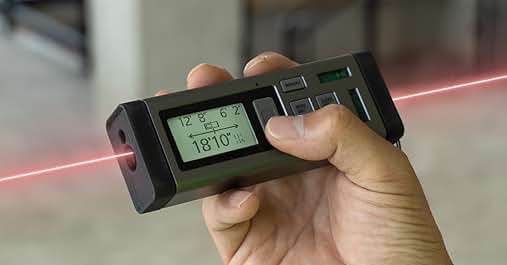
The advantages offered by LDMs are numerous. Their portability makes them easy to carry around during inspections, while their high precision ensures reliable results even over long distances. Furthermore, LDMs often come equipped with additional features like area and volume calculation functions, making them invaluable assets for assessing room dimensions or calculating material requirements accurately.
Digital Moisture Meters
In order to evaluate potential water damage or moisture-related issues within a property, home inspectors heavily rely on digital moisture meters (DMMs). These handheld devices allow quick non-invasive testing of moisture levels in various materials such as wood or drywall through electrical resistance measurement.
By inserting pins into materials or using pinless scanning techniques, DMMs provide immediate readings that indicate the presence and extent of moisture. This information is crucial in detecting hidden water damage or areas prone to mold growth, helping inspectors identify potential risks to a property’s structural integrity.
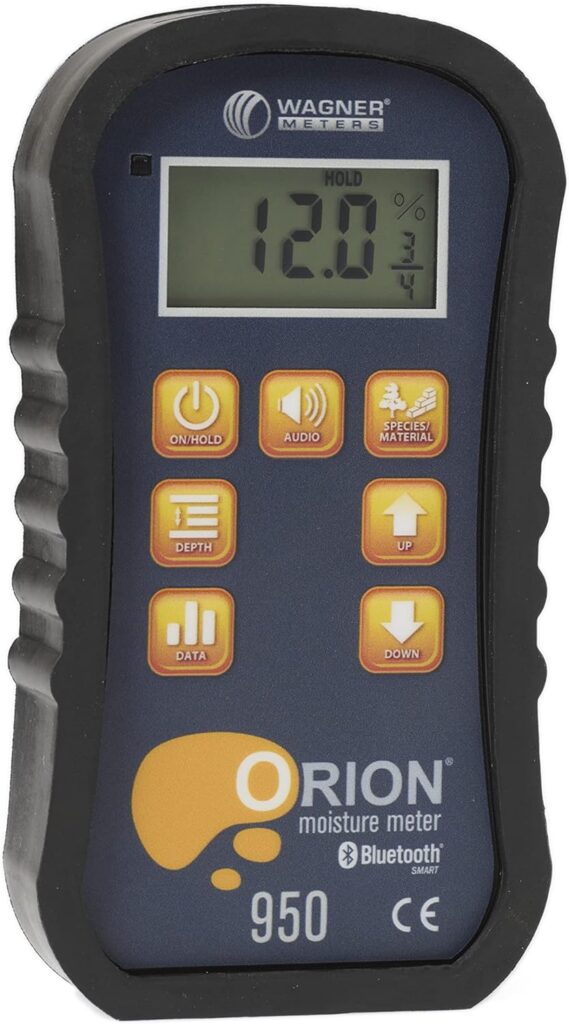
The ability to measure moisture levels accurately with DMMs helps home inspectors pinpoint problem areas and advise homeowners on appropriate actions, such as repair or remediation. By providing tangible evidence through objective measurements, these devices contribute significantly to the overall accuracy and credibility of a home inspection report.
Infrared Thermometers
Infrared thermometers (IRTs) are another essential tool found in every home inspector’s arsenal. These non-contact devices detect thermal radiation emitted by surfaces and convert it into temperature readings without making physical contact. IRTs allow inspectors to assess temperature variations quickly and effectively across various components within a building.

By identifying abnormal temperatures on surfaces like electrical panels or HVAC systems, IRTs assist in locating potential issues such as faulty wiring or insulation problems. Inspectors can also use them for energy efficiency assessments by evaluating heat loss or identifying inadequate insulation in walls or windows.
Moreover, infrared thermometers enable inspectors to examine inaccessible areas without causing damage since they do not require direct contact with surfaces under evaluation. This capability makes IRTs valuable tools for assessing the condition of components located behind walls or ceilings where access may be limited.
Conclusion
Precision measuring tools are integral parts of every home inspector’s toolkit. Laser distance meters allow accurate measurements of distances effortlessly while digital moisture meters help detect hidden water damage effectively. Infrared thermometers enable non-invasive assessment of temperature variations throughout a property.
These tools play vital roles in ensuring thorough and reliable inspections by providing objective data that supports informed decision-making regarding property conditions and repairs needed. As technology continues to advance, new precision tools will undoubtedly emerge further improving the accuracy and effectiveness of home inspections for years to come.
The Importance of Accurate Measurements in Home Inspection
Accurate measurements are crucial in any profession that requires precision, and home inspection is no exception. As a home inspector, you are responsible for assessing the condition of various aspects of a property, including its structural integrity, electrical systems, plumbing fixtures, and more. To do this effectively, you must have access to reliable measuring devices.
One of the primary reasons why accurate measurements are essential in home inspection is because they provide an objective basis for your evaluations. By using precise tools to measure lengths, widths, heights, angles, and other dimensions accurately, you can avoid subjective judgments that may lead to inaccurate assessments. With accurate measurements at hand during a home inspection process, you can confidently document your findings and communicate them clearly to clients.
Furthermore, precise measurements also help identify potential safety hazards within a property. For example, improperly installed electrical outlets or wiring could pose significant risks such as electrocution or fire outbreaks. By using measuring devices like voltage testers or current clamp meters correctly and obtaining accurate readings when inspecting these systems’ components safely assess their condition determine whether they meet safety standards.
Another aspect where precise measurements are vital is in evaluating energy efficiency levels within a property. Inefficient insulation or poorly sealed windows can result in energy loss which not only affects comfort but also increases utility bills significantly over time measurement tools such as thermal imaging cameras allow inspectors detect areas heat loss with great accuracy by capturing temperature differences surfaces infrared radiation emitted objects wall thinness scanner used determine quality existing insulating materials well locate air leaks drafts throughout building envelope precisely analyze effectiveness sealing methods suggest appropriate measures improvement.
Additionally being able accurately measure distances important ensure proper placement furniture appliances consider overall layout spatial arrangement room design necessary guarantee homeowners maximum functionality comfort everyday living conditions measuring tapes laser distance meters useful acquiring correct calculations laying out floor plans determining sizes required furnishings fixtures without guesswork.
Furthermore, precise measurements are essential in identifying structural issues within a property. By using tools such as moisture meters or digital inclinometers, you can accurately assess the condition of walls and floors, detect potential water damage or subsidence problems early on. This information allows you to provide accurate recommendations for repairs or maintenance work that may be needed before they develop into more severe structural issues.
In conclusion, accurate measurements play a vital role in home inspection by providing an objective basis for evaluations, identifying safety hazards and energy efficiency concerns detecting structural problems. As a professional home inspector, it is crucial to invest in high-quality measuring devices that are reliable and easy to use. These precision tools will not only enhance your credibility but also enable you to deliver thorough reports that clients can trust when making important decisions about their properties.
Choosing the Right Measuring Device for Different Inspection Tasks
Home inspectors play a crucial role in ensuring the safety and integrity of residential properties. From assessing electrical systems to examining structural components, these professionals rely on a range of measuring devices to collect accurate data during their inspections. However, with so many options available in the market, it can be challenging for home inspectors to determine which measuring device is best suited for each specific inspection task.
One key consideration when choosing a measuring device is the accuracy required for the task at hand. For instance, when inspecting electrical wiring, precise measurements are essential. In such cases, digital multimeters are often preferred due to their high level of accuracy. These devices measure various parameters such as voltage, current, and resistance with great precision. They also offer additional features like data logging capabilities and built-in temperature sensors that can prove useful during electrical inspections.
Another important factor to consider is ease of use and portability. Home inspectors often need to move around tight spaces or climb ladders while conducting their inspections; therefore, selecting lightweight and handheld tools is essential. Laser distance meters are an excellent choice in this regard as they provide quick and accurate measurements without requiring physical contact with surfaces. These compact devices allow home inspectors to easily measure distances between walls or ceiling heights within seconds.
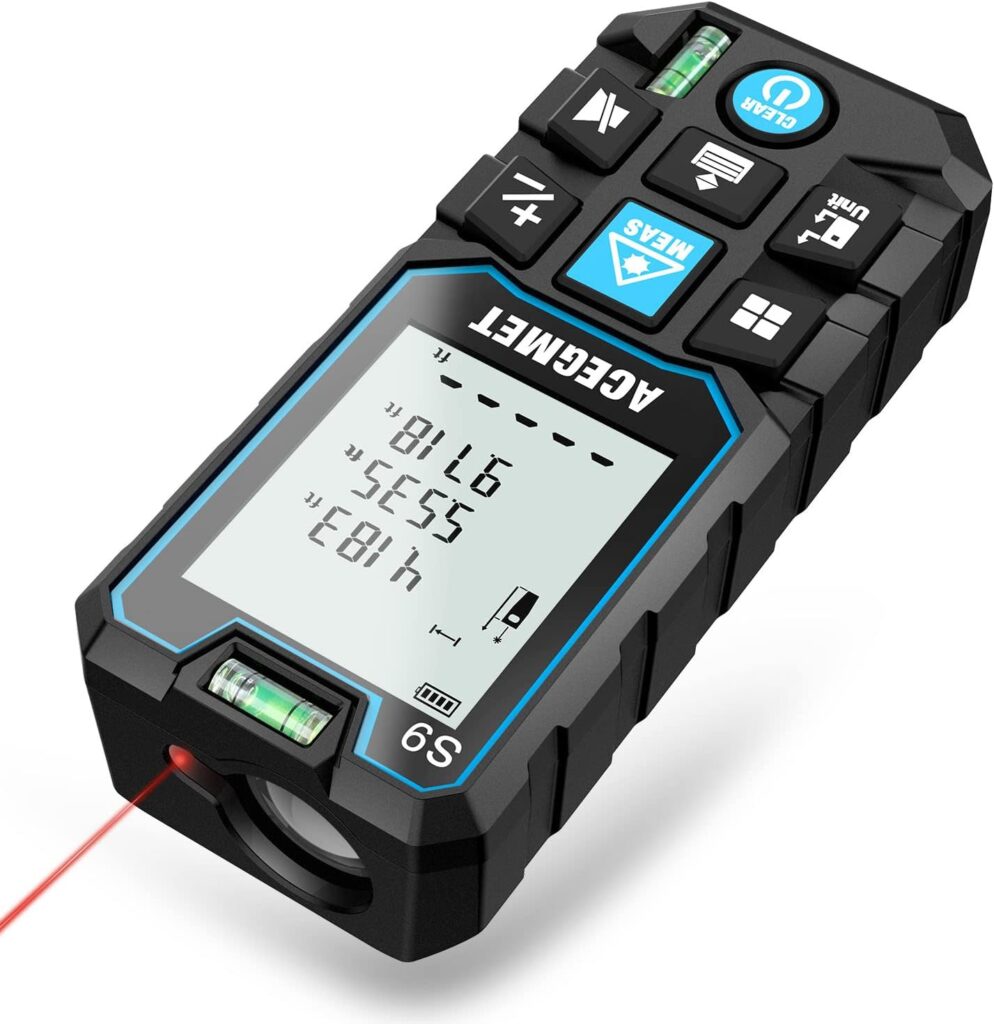
When inspecting areas that require more extensive measurements such as room dimensions or window sizes, tape measures remain indispensable tools for home inspectors. They are durable yet flexible enough to wrap around corners or objects without losing accuracy. Tape measures come in different lengths ranging from six feet up to 100 feet long enabling versatility across various inspection tasks.
In some instances where visual evidence may be needed during inspections – such as capturing images of cracks or damages – borescopes become invaluable tools for home inspectors’ toolkits. Borescopes consist of a flexible cable connected to a camera that can be inserted into tight spaces, allowing inspectors to visually examine areas that are not readily accessible. This technology is particularly useful when inspecting hidden plumbing or HVAC systems.
For home inspections involving more specialized tasks, such as analyzing moisture levels within walls or identifying thermal leaks, advanced tools like moisture meters and thermal imaging cameras prove essential. Moisture meters enable home inspectors to detect the presence of excessive moisture in building materials by measuring electrical resistance. By doing so, they help identify potential water damage or mold growth. On the other hand, thermal imaging cameras utilize infrared technology to visualize temperature variations across surfaces and identify insulation deficiencies or heat leaks.
In conclusion, selecting the appropriate measuring devices for different inspection tasks is crucial for ensuring accurate and efficient home inspections. Home inspectors must consider factors such as accuracy requirements, ease of use, portability, and specific functionalities offered by each device type. Digital multimeters provide precise measurements during electrical inspections while laser distance meters offer quick and contactless distance measurements in tight spaces. Tape measures remain a reliable option for various measurements around the property’s dimensions. Borescopes allow visual inspection in hard-to-reach areas while moisture meters and thermal imaging cameras assist with identifying potential issues related to moisture and temperature differentials respectively.
By carefully evaluating these factors and selecting the right measuring devices for their specific needs, home inspectors can enhance their efficiency while delivering high-quality services to homeowners looking for peace of mind regarding their properties’ condition
Understanding Different Types of Tape Measures and Their Uses
In the world of home inspection, accuracy and precision are essential. As a home inspector, having the right tools at your disposal is crucial to ensuring that measurements are correct and reliable. One such tool that every home inspector should have in their toolkit is a tape measure. Tape measures come in various types, each with its own set of features and uses.
The most common type of tape measure used by home inspectors is the steel measuring tape. These tapes consist of a metal strip with measurement markings on one side and a retractable mechanism on the other side. Steel measuring tapes are typically available in lengths ranging from 16 feet to 35 feet.
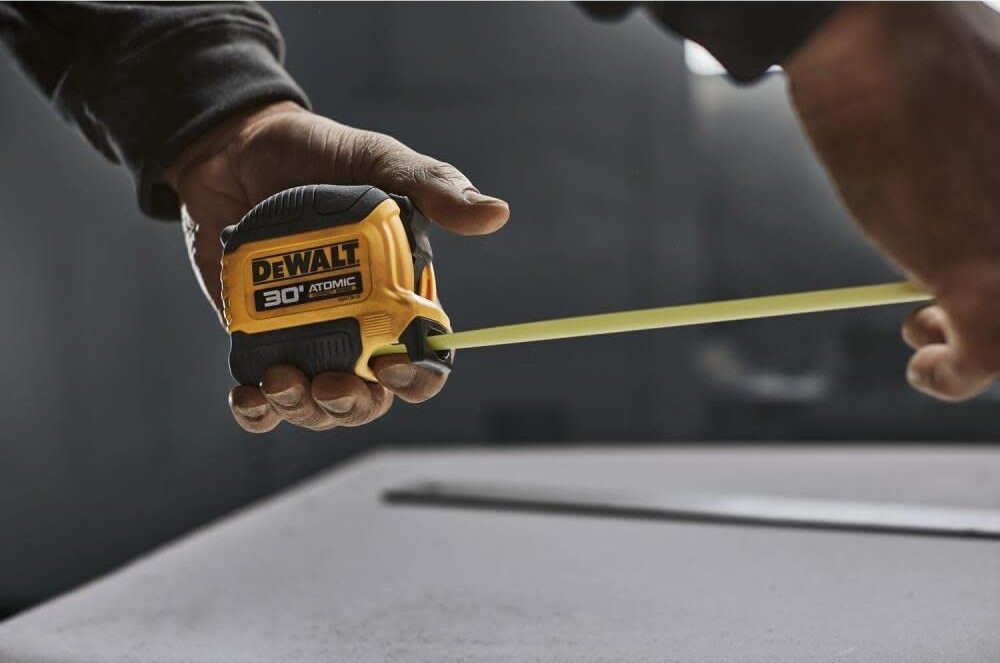
Steel measuring tapes are perfect for measuring large distances accurately. They have excellent durability, making them ideal for use in rugged environments encountered during inspections. Additionally, steel measuring tapes usually have a locking mechanism that allows you to secure the tape at any desired length without it retracting back into the case.
For smaller measurements or when dealing with tight spaces, another useful type of tape measure is the pocket-sized or compact tape measure. These smaller versions often range from 6 feet to 12 feet in length but still offer accurate measurements similar to their larger counterparts.
Compact tape measures come equipped with a small case that easily fits into your pocket or belt loop for convenient transportation while performing inspections. The compact size allows easy maneuverability within cramped areas where larger steel measuring tapes may be challenging to use effectively.
In addition to steel and compact tape measures, there is also an alternative option known as laser distance measurers (LDMs). LDMs use lasers instead of physical strips like traditional tape measures, allowing for precise measurements even over long distances without needing someone else’s help holding one end of the tape.
Laser distance measurers work by emitting laser beams onto surfaces and then calculating distances based on how long it takes for those beams to bounce back. This technology ensures accurate measurements and eliminates the need for a physical tape measure in certain situations, making LDMs a valuable tool for home inspectors.
Furthermore, some LDM models are equipped with additional features such as area calculation and Bluetooth connectivity. These features allow home inspectors to easily calculate room dimensions or transfer measurement data directly to their smartphones or tablets for further analysis and documentation.
While steel measuring tapes, compact tape measures, and laser distance measurers are all effective tools for home inspectors, it is essential to select the right one based on your specific needs. Consider factors such as the size of the space you will be inspecting, potential obstacles that may hinder traditional tape measure usage, and any additional functionality required during inspections.
In conclusion, understanding different types of tape measures and their uses is vital for home inspectors seeking precise measurements during inspections. Steel measuring tapes offer durability and accuracy over long distances, while compact tape measures excel in tight spaces. Laser distance measurers provide an alternative option with advanced features like area calculation and wireless data transfer. By selecting the appropriate type of tape measure for each situation encountered during inspections, home inspectors can ensure reliable measurements necessary in their line of work.
Exploring Laser Distance Meters: Benefits and Applications in Home Inspections
In the world of home inspections, precision is key. Inspectors need to have accurate measurements and data in order to provide thorough reports for their clients. One tool that has become increasingly popular among home inspectors is the laser distance meter. This device uses laser technology to measure distances with a high level of accuracy, making it an invaluable tool for professionals in this field.
One of the main benefits of using a laser distance meter in home inspections is its ability to save time. Traditional methods of measuring distances involve using a tape measure or ruler, which can be both time-consuming and prone to human error. With a laser distance meter, inspectors can quickly and easily obtain measurements with just the push of a button.
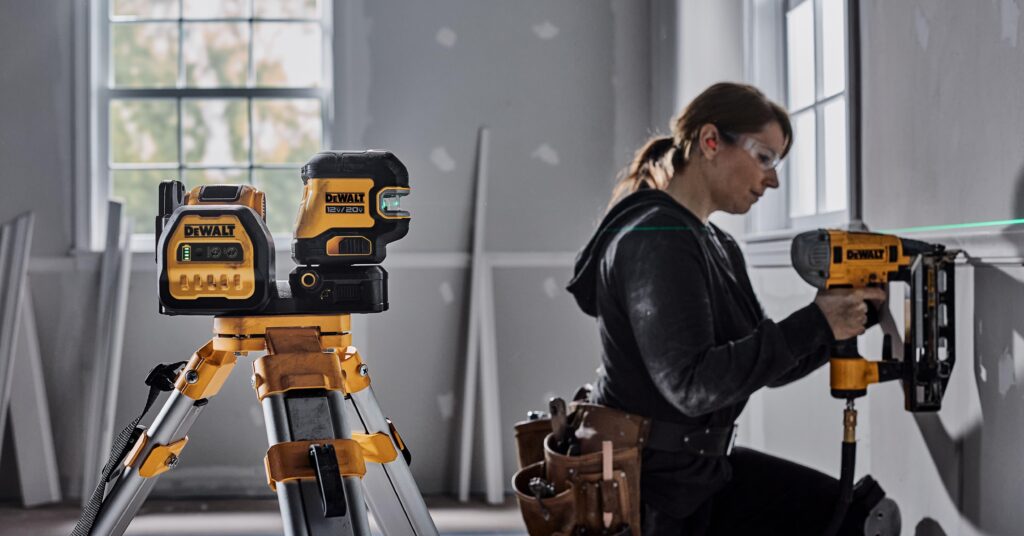
Not only does this save time during the inspection process itself, but it also allows inspectors to complete more inspections in a day. The increased efficiency provided by laser distance meters means that inspectors can work more effectively and take on more jobs, ultimately increasing their earning potential.
Accuracy is another major advantage offered by laser distance meters. These devices use advanced technology to calculate measurements based on precise laser beams. As a result, they provide highly accurate readings within millimeters or even smaller increments.
This level of accuracy ensures that home inspectors are able to provide their clients with reliable information about room sizes, dimensions, and other critical measurements within a property. It also helps prevent errors or discrepancies that could lead to misunderstandings or disputes down the line.
Laser distance meters are not limited solely to measuring linear distances; they can also be used for calculating area and volume as well as determining angles between walls or floors. This versatility makes them an incredibly useful tool for various aspects of home inspections.
For instance, when assessing the size of rooms during an inspection, inspectors can simply aim the laser at each wall’s edge while walking around the perimeter – no manual calculations required! Similarly, when examining outdoor areas such as yards or driveways during exterior assessments – where irregular shapes are common – the laser distance meter can quickly and accurately determine their areas.
Furthermore, some advanced models of laser distance meters offer additional features that further enhance their utility. For example, many devices come equipped with a built-in digital level to help inspectors ensure surfaces are perfectly horizontal or vertical. This feature is especially useful when evaluating aspects like floor flatness or wall alignment during an inspection.
Additionally, some models even have Bluetooth capabilities that allow measurements to be instantly transferred to a smartphone or tablet for easy documentation and reporting. This eliminates the need for manual transcription and minimizes the risk of data entry errors, streamlining the entire inspection process from start to finish.
In conclusion, laser distance meters have proven themselves as invaluable tools in home inspections due to their time-saving capabilities, accuracy, versatility, and additional features. Home inspectors who choose to incorporate this technology into their workflow will undoubtedly benefit from increased efficiency and improved quality of reports. As precision remains paramount in this field, investing in a laser distance meter should be considered by any serious professional looking to elevate their practice.
An In-Depth Look at Digital Calipers: A Must-Have Tool for Home Inspectors
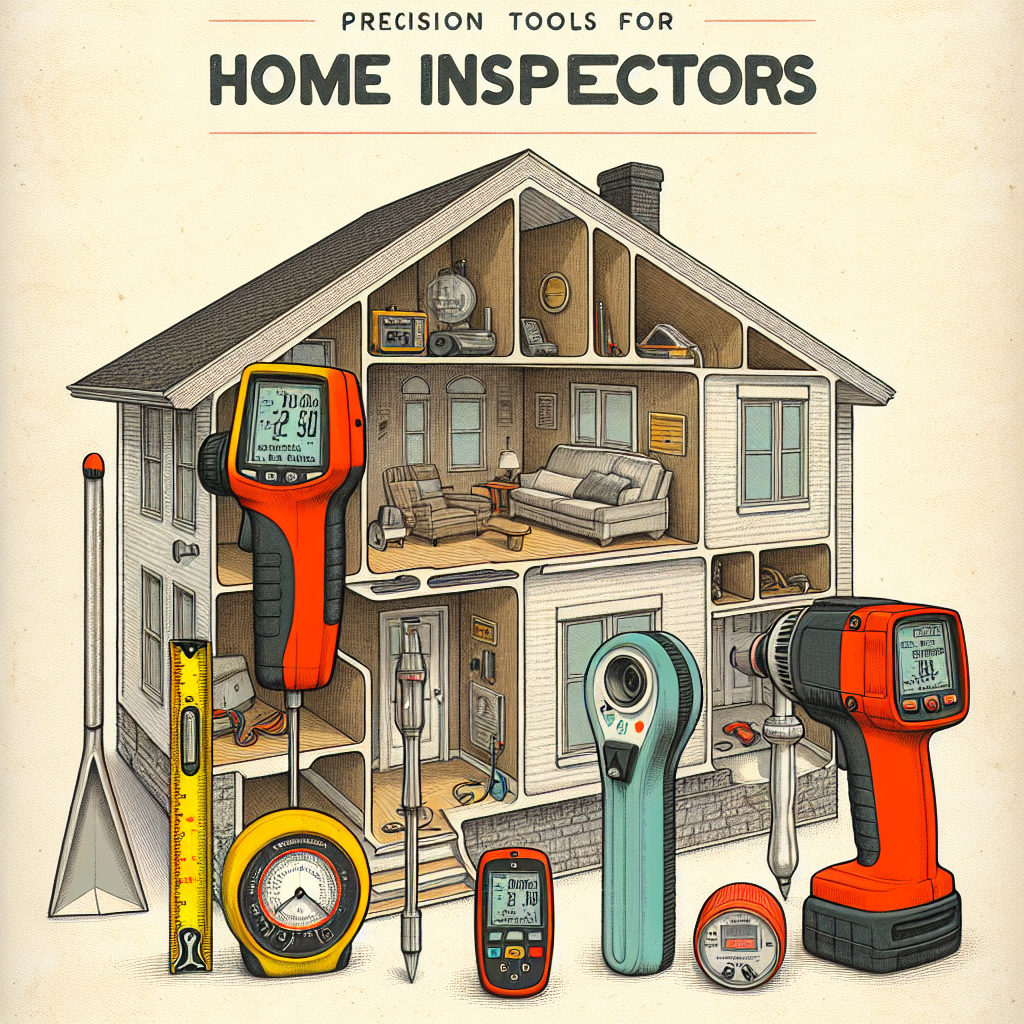
In the world of home inspections, accuracy and precision are essential. Every inch, every angle, and every measurement matters. That’s why having reliable measuring devices is crucial for any home inspector. One tool that stands out from the rest is the digital caliper – a must-have instrument in every home inspector’s toolkit.
Digital calipers offer an unparalleled level of accuracy when it comes to taking measurements. Unlike traditional calipers, which require manual reading and interpretation of measurements on a sliding scale, digital calipers provide precise readings displayed on an easy-to-read digital screen. This eliminates any potential errors or inaccuracies that may arise from human interpretation.
The primary advantage of using digital calipers is their ability to measure with exceptional precision. With most models offering resolutions down to 0.01mm or even smaller increments, these tools can detect even the tiniest differences in dimensions accurately. For home inspectors who deal with intricate details such as door clearances or window openings, this level of precision is invaluable.
Another benefit of digital calipers is their versatility. These tools come equipped with interchangeable jaws that allow users to measure both inside and outside dimensions accurately. This feature enables inspectors to assess various components within a property effectively – from measuring wall thicknesses to determining pipe diameters – making them an indispensable tool for any comprehensive inspection.
Furthermore, many modern digital calipers boast additional features that further enhance their functionality and usability. Some models include built-in depth gauges, allowing inspectors to measure depth easily without needing separate tools or estimates based on visual approximation alone.
Additionally, some advanced versions possess data output capabilities through USB connectivity or wireless connections such as Bluetooth technology. These features enable inspectors to transfer measurement data directly into computer programs or mobile applications for more efficient record-keeping and analysis.
Durability is another crucial aspect when choosing a measuring device as frequent use in various environments can expose tools to wear and tear. Digital calipers, with their sturdy construction and robust materials such as stainless steel or carbon fiber composites, are built to withstand the demands of professional use.
Battery life is yet another consideration that sets digital calipers apart from their traditional counterparts. While some models require regular battery replacements, many offer extended battery life thanks to energy-saving features like auto power-off after periods of inactivity. This ensures that the tool is ready for use whenever it’s needed without interruptions due to dead batteries.
In conclusion, digital calipers represent a significant advancement in precision measuring devices for home inspectors. Their accuracy, versatility, and additional features make them an indispensable tool when it comes to conducting thorough inspections efficiently. From precise measurements of dimensions to assessing depths and transferring data electronically, these instruments streamline the inspection process while maintaining high levels of accuracy and reliability.
Investing in a quality digital caliper will undoubtedly pay dividends for any home inspector who seeks excellence in their profession. With its ability to provide accurate measurements quickly and effortlessly across various applications within a property inspection context, this tool has rightfully earned its place as a must-have instrument among home inspectors worldwide
How to Use Levels and Angle Finders Effectively in Property Inspections
When it comes to conducting property inspections, accuracy is paramount. As a home inspector, you need reliable tools that can provide precise measurements and angles. In this guide, we will explore the effective use of levels and angle finders in property inspections.
Levels are one of the most fundamental tools used by home inspectors. They are essential for determining whether surfaces or structures are level or plumb. When using a level, it’s crucial to ensure that it is properly calibrated and free from any defects or damage. To achieve accurate readings, start by placing the level on a flat surface and observing the bubble position. If the bubble rests within the center lines, then you can confidently determine that the surface is indeed level.
In some cases, you may encounter uneven surfaces that require adjustments before measuring with a level. In such instances, shims can be inserted beneath one end of the level until balance is achieved. It’s important to note that when using shims, they should be made of durable materials capable of bearing weight without compression over time.
Angle finders are another valuable tool in a home inspector’s arsenal. These devices allow you to accurately measure angles between two adjacent surfaces or objects such as walls or ceilings. When using an angle finder, make sure it is zeroed properly before taking any measurements.
To effectively use an angle finder during your property inspection, place one arm against one surface while aligning the other arm along its corresponding adjoining surface. The reading on the gauge will indicate the exact angle measurement between them.
Transitional phrase: Now let’s discuss some tips for utilizing levels and angle finders effectively during property inspections:
1) Take multiple measurements – To ensure accuracy when using levels and angle finders in property inspections, take multiple measurements from different locations throughout each room or structure being inspected.
2) Be aware of external factors – Remember that environmental factors can influence your readings. Vibrations from nearby machinery or uneven surfaces may affect the accuracy of your measurements, so always double-check if any inconsistencies are detected.
3) Take note of precision limitations – Levels and angle finders have their limitations in terms of precision. Some models may only provide readings up to a certain decimal point, so be mindful of these restrictions when interpreting your measurements.
4) Consider using digital devices – Digital levels and angle finders offer additional convenience and accuracy. These modern tools often come with built-in displays that show precise measurements without requiring manual interpretation.
In conclusion, levels and angle finders play a crucial role in property inspections by providing accurate measurements for determining surface levelness and angles between adjacent structures. To use them effectively, ensure that these tools are properly calibrated before use, take multiple measurements from different locations within each room or structure being inspected, consider environmental factors that might affect readings, note any limitations regarding precision capabilities, and explore the benefits offered by digital alternatives.
By utilizing levels and angle finders correctly during property inspections, you can enhance the overall quality of your assessments while instilling confidence in clients who rely on your expertise. Remember that practice makes perfect – familiarize yourself with these tools through consistent usage to become proficient at accurately assessing surfaces and angles during property inspections.
The Advantages of Using Infrared Thermometers in Home Inspections
Home inspections are a crucial part of the real estate industry, ensuring that potential buyers have all the necessary information about a property before making a purchase. To perform thorough inspections, home inspectors rely on a range of precision tools and devices. One such device that has gained popularity in recent years is the infrared thermometer.
Infrared thermometers offer several advantages over traditional thermometers when it comes to conducting home inspections. Firstly, they provide non-contact temperature measurements, which means inspectors can measure temperatures without having to physically touch an object or surface. This feature is particularly useful when inspecting electrical panels or HVAC systems where safety precautions are paramount.
Another advantage of using infrared thermometers in home inspections is their ability to capture temperature readings from hard-to-reach places. With their long-range capabilities, these devices allow inspectors to measure temperatures accurately even from a distance. This is especially beneficial when examining areas like ceilings or crawl spaces where accessing them may be challenging.
Furthermore, infrared thermometers are known for their speed and efficiency. Traditional thermometers often require time-consuming contact measurements and lengthy wait times for accurate results. In contrast, infrared thermometers provide instant readings with just a press of a button. This allows inspectors to work more efficiently and complete inspections in less time.
Accuracy is essential in any measurement tool used during home inspections, and infrared thermometers excel in this aspect as well. These devices utilize advanced technology that measures the thermal radiation emitted by an object or surface accurately. The accuracy of these measurements ensures that inspectors can detect potential issues such as insulation problems or heat leaks precisely.
Apart from accuracy, another notable advantage of using infrared thermometers is their versatility. They can be used across various aspects of home inspection processes due to their ability to measure both ambient air temperature and surface temperatures simultaneously – allowing inspectors to gather comprehensive data quickly.
One area where the use of an infrared thermometer shines is in identifying moisture-related issues. By measuring temperature differentials, inspectors can locate potential water leaks or areas with excess moisture that may lead to mold growth. This ability to detect hidden problems allows for proactive measures to be taken before they escalate into costly repairs for homeowners.
Moreover, infrared thermometers are highly portable and easy to use. Their compact size and lightweight design make them convenient tools for home inspectors who often need to carry multiple devices during inspections. The user-friendly interface of these thermometers enables inspectors to operate them without the need for extensive training.
In conclusion, using infrared thermometers in home inspections offers several advantages over traditional temperature measuring devices. These include non-contact measurements, long-range capabilities, speed and efficiency, accuracy, versatility, and their ability to identify moisture-related issues. With their portability and ease of use, infrared thermometers have become indispensable tools for modern home inspectors striving to provide thorough assessments for prospective buyers. As the real estate industry continues to evolve, it is crucial for professionals in this field to stay updated on technological advancements such as precision measurement devices like infrared thermometers – ensuring that they can offer accurate insights into a property’s condition and contribute towards informed decision-making processes.
Diving into Moisture Meters: Detecting Water Intrusion and Preventing Damage
Water intrusion can be a significant issue in homes, causing structural damage, mold growth, and other costly repairs. As a home inspector, it is crucial to have the right tools to accurately detect moisture levels and identify potential areas of water intrusion. One such tool that proves invaluable in this task is the moisture meter.
Moisture meters are precision instruments designed to measure the amount of moisture content present in various materials. They work by using electrical resistance or capacitance to determine the level of moisture within an object. This information helps home inspectors identify areas where excess moisture may be present.
One common use for moisture meters is detecting water intrusion in walls and ceilings. By measuring the moisture content of these surfaces, inspectors can pinpoint any hidden leaks or seepage that might otherwise go unnoticed. With this knowledge at hand, they can then recommend appropriate solutions before further damage occurs.
Furthermore, moisture meters are also useful for inspecting flooring materials such as carpets and hardwoods. High humidity levels or inadequate subfloor ventilation can lead to dampness under carpets or behind baseboards which could eventually result in rotting floorboards or mold growth if left unchecked. By using a moisture meter during inspections, home inspectors can catch these issues early on and advise homeowners on how best to address them.
When using a moisture meter during inspections, it is important to understand its limitations as well. While highly accurate at determining relative levels of dampness within objects like wood or drywall, certain factors such as temperature variations or surface coatings may affect readings obtained from these devices. Therefore, it is recommended that inspectors take multiple measurements from different locations to ensure accuracy.
There are two main types of moisture meters commonly used by home inspectors – pin-type and pinless meters.
Pin-type meters require two pins that must be inserted into the material being tested for an accurate reading. These pins penetrate the surface and make contact with the material’s interior, allowing for a more precise measurement. Pin-type meters are particularly effective for measuring moisture content in materials like wood or drywall.
On the other hand, pinless meters use electromagnetic waves to measure moisture levels without penetrating the material being tested. They are ideal for inspecting larger areas quickly, such as concrete slabs or subflooring. While they may not provide the same level of accuracy as pin-type meters, they still offer valuable insights into potential water intrusion issues.
In conclusion, moisture meters are vital tools for home inspectors when it comes to detecting water intrusion and preventing damage. By accurately measuring moisture levels in various materials, these precision instruments enable inspectors to identify hidden leaks, seepage, or dampness that could lead to costly repairs down the line. Both pin-type and pinless meters have their advantages and limitations but can be used effectively depending on the specific needs of an inspection. Armed with this knowledge and equipped with a reliable moisture meter, home inspectors can provide homeowners with invaluable information about maintaining their homes’ structural integrity and avoiding potential water-related disasters.
Exploring the World of Borescopes: Examining Hidden Areas with Precision
In the world of home inspection, precision is key. As a home inspector, it is your responsibility to thoroughly examine every nook and cranny of a property in order to provide an accurate assessment of its condition. To aid you in this important task, there are a wide variety of measuring devices available that can help you access hidden areas with precision.
One such tool is the borescope. Borescopes are flexible optical instruments that allow inspectors to visually inspect hard-to-reach places without having to dismantle or damage anything. They consist of a long tube with a camera on one end and an eyepiece or screen on the other end.
Borescopes come in different sizes and configurations depending on their intended use. Some are rigid while others are flexible, allowing inspectors to navigate through tight spaces like vents or plumbing pipes. The camera at the tip captures high-resolution images or videos which can be viewed in real-time or saved for later analysis.
The beauty of borescopes lies in their versatility and ability to reveal hidden problems that may otherwise go unnoticed during a visual inspection alone. For instance, if there is suspected mold growth behind walls or under floorboards, a borescope can be used to access these areas and capture detailed images for further examination.
In addition to mold detection, borescopes also prove invaluable when checking for leaks or blockages within plumbing systems. By inserting the flexible probe into drainpipes or water supply lines, inspectors can identify issues such as cracks, corrosion, tree root intrusions, or debris buildup that might affect overall system performance.
Electrical inspections can also benefit greatly from using borescopes. These tools allow inspectors to safely assess electrical panels by capturing clear visuals inside them without having direct contact with potentially hazardous live wires. This helps detect loose connections, worn-out components, overheating problems – all of which may lead to electrical malfunctions or even fires.
Furthermore, borescopes can be utilized in HVAC inspections. By inserting the probe into air ducts, inspectors can assess the condition of the system’s interior and identify any accumulation of dust, debris, or signs of pest infestation that could compromise indoor air quality. Borescopes also aid in locating leaks or blockages within ductwork that may affect overall heating and cooling efficiency.
In conclusion, borescopes are essential precision tools for home inspectors seeking to thoroughly examine hidden areas without causing unnecessary damage. Their flexibility and ability to capture high-resolution images make them invaluable in detecting problems such as mold growth, plumbing issues, electrical malfunctions, and HVAC system inefficiencies.
When choosing a borescope for your home inspection needs, consider factors like size, flexibility, camera resolution, ease of use, and durability. Investing in a reliable borescope will not only enhance your ability to provide accurate assessments but also save time by eliminating the need for costly exploratory measures.
Ultimately, by employing these advanced measuring devices like borescopes alongside other precision tools at your disposal as a home inspector you can ensure that no stone goes unturned when it comes to evaluating a property’s condition accurately. With precision tools at hand guiding you through each inspection process step-by-step- there is no limit to how well you’ll perform during evaluations with clients who rely on your expertise!
Safety Precautions and Maintenance Tips for Your Precision Tools
When it comes to home inspections, precision tools are essential in providing accurate measurements. These devices allow home inspectors to assess the condition of various components in a house, such as walls, floors, and electrical systems. However, using these tools requires proper safety precautions and regular maintenance to ensure their effectiveness and longevity.
Firstly, it is crucial to wear appropriate personal protective equipment (PPE) when using precision tools. This includes safety glasses or goggles to protect your eyes from potential flying debris or particles that may be released during measurement activities. Additionally, gloves should be worn to provide hand protection from sharp edges or accidental contact with hot surfaces.
In order to minimize the risk of accidents or injuries while operating precision tools, it is important to handle them with care. Always read the user manual before using any new tool and follow all instructions provided by the manufacturer. Pay attention to weight restrictions for each device so as not to overload its capacity. Remember that mishandling these tools can lead not only to damage but also pose a significant risk of harm.
Regular maintenance of precision measuring devices is vital for their accuracy and durability. Cleaning them after each use helps remove dirt or dust that may accumulate on sensitive parts such as lenses or sensors. Use soft brushes or lint-free cloths rather than abrasive materials which could scratch delicate surfaces.
Calibration is another critical aspect of maintaining precise measurements with these devices. Regular calibration ensures that they remain accurate over time by adjusting any deviations caused by wear and tear or environmental factors such as temperature changes. Many manufacturers offer calibration services either through authorized centers or online platforms; therefore, it’s essential you check your specific device’s requirements.
Proper storage plays an integral role in preventing damage when your precision tools are not being used. Keep them in designated cases or cabinets where they will be protected from impacts, moisture, extreme temperatures, and excessive exposure to sunlight which can lead to the deterioration of their components. Avoid storing them with other tools or equipment that could potentially cause harm.
Regular inspection of your precision tools is essential for identifying any signs of wear, damage, or malfunction. Pay attention to indicators such as loose parts, frayed cables, or worn-out batteries. If you notice any issues, it is crucial to address them promptly by contacting the manufacturer for repairs or replacements.
Lastly, it is vital to establish a schedule for maintenance and follow it consistently. This includes not only regular cleaning but also calibrating your devices according to the recommended intervals provided by the manufacturer. By doing so, you will ensure that your precision tools are always in optimal condition when needed.
In conclusion, safety precautions and proper maintenance are paramount when using precision measuring devices for home inspections. Wearing appropriate personal protective equipment and handling these tools with care can significantly reduce the risk of accidents or injuries. Regular cleaning and calibration help maintain accuracy over time while proper storage prevents damage caused by environmental factors. By adhering to these guidelines, home inspectors can ensure that their precision tools remain effective and reliable throughout their usage period.Precision tools for home inspectors are essential for accurate measurements and assessments. These measuring devices play a crucial role in identifying potential issues or areas of concern during home inspections. Whether it’s measuring dimensions, levels, distances, or temperatures, precision tools provide reliable data that enables inspectors to make informed decisions.
There are various types of precision tools available for home inspectors, each serving specific purposes. Laser distance measurers ensure quick and accurate measurements of room dimensions and distances without the need for manual tape measures. Moisture meters help identify hidden moisture problems by detecting abnormal levels in walls or floors.
Thermal imaging cameras can be used to detect insulation deficiencies, electrical problems, water leaks, or even structural issues by capturing infrared radiation emitted from different surfaces. Levels and angle finders help determine whether surfaces are flat or if there is any slope present.
In conclusion, precision tools are invaluable assets to home inspectors as they aid in conducting thorough assessments with precise measurements. By utilizing these devices effectively during inspections, inspectors can provide clients with detailed reports that accurately depict the condition of a property. With the increasing reliance on technology within the field of home inspection, investing in quality precision tools is an essential step towards ensuring professionalism and accuracy in this line of work.
